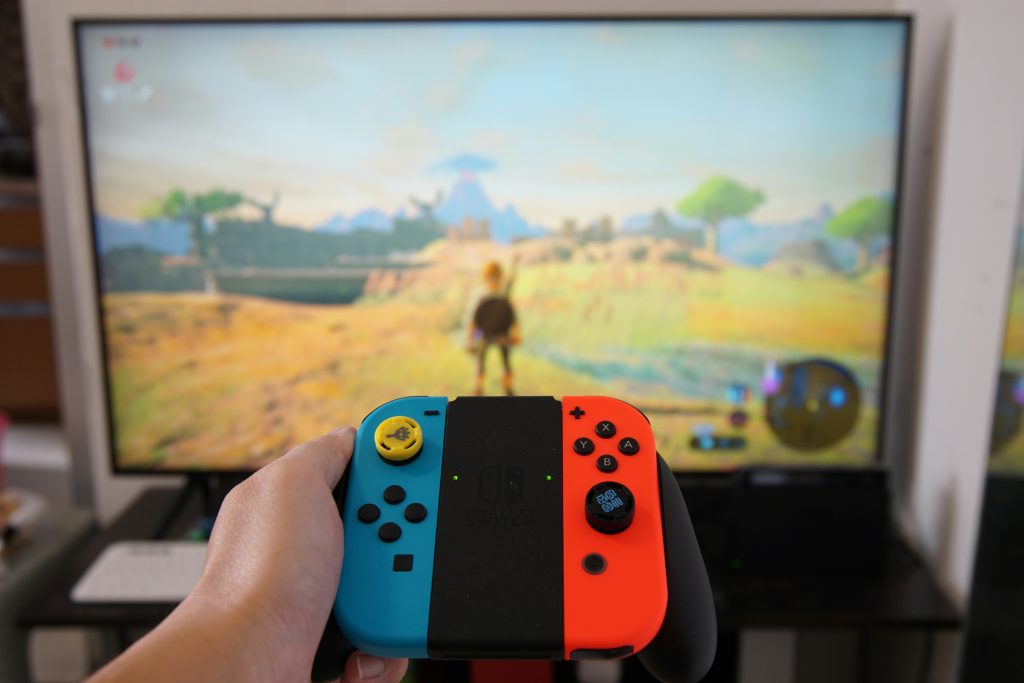Virtual Reality (VR) has come a long way since its inception, offering gamers an entirely new way to experience the worlds they love. What was once a distant dream of science fiction has now become a rapidly advancing technology, reshaping the way we interact with games. With each passing year, VR gaming continues to evolve, pushing the boundaries of realism, interactivity. But what lies ahead? Let’s explore the exciting future of Virtual Reality in gaming and how it could transform the gaming experience forever.
1. More Engaging Worlds and Realistic Graphics
The most obvious area where VR will continue to improve is in the realm of graphics. As technology advances, VR headsets will offer even sharper, more realistic visuals. We’re already seeing improvements with the latest devices, such as Oculus Quest 2, PlayStation VR2, and the HTC Vive Pro 2, which support high-resolution displays, but there’s still a long way to go.
Future VR systems will likely deliver true 4K or even 8K resolution per eye, creating lifelike environments where the lines between the virtual and real world blur. Ray tracing, a rendering technique used to simulate realistic lighting, shadows, and reflections, will become more prevalent, further enhancing the realism of virtual worlds. Imagine stepping into an environment where the light reflects off surfaces naturally, and objects cast shadows that change dynamically in response to your movements—this is the future of engaging graphics in VR gaming.
2. Full-Body Tracking and Haptic Feedback
Currently, VR gaming typically involves using handheld controllers and a headset, with the player’s head and hands being tracked in the virtual space. But the future of VR in gaming will likely include full-body tracking, allowing players to move and interact more naturally with the game world.
With full-body tracking, your legs, arms, and torso could all be part of the experience. For example, in a VR combat game, you might physically duck behind cover, crouch to avoid incoming fire, or even perform physical movements like high kicks or sword strikes. This would require advancements in tracking technology, such as the development of more advanced sensors and wearable devices that can capture and translate full-body movements into the virtual environment.
Alongside this, haptic feedback technology will continue to evolve, offering players more tactile sensations. For example, you could feel the weight of a virtual object in your hands or the impact of a blow during combat, as if you were really in the game. By using specialized gloves, suits, and controllers, VR could deliver a truly multisensory experience, heightening the sense of realism.
3. Improved Motion Sickness Solutions
One of the primary barriers to widespread VR adoption has been motion sickness. When there is a delay between your movements and the response on-screen, it can cause a disconnect that leads to dizziness or nausea. Fortunately, VR developers are aware of this issue and are actively working on solutions.
We can expect future VR systems to have better motion tracking and improved frame rates, which will help reduce latency and create a more fluid experience. Additionally, VR games will likely incorporate features that allow players to control the level of comfort, such as adjustable field-of-view (FOV) or the ability to toggle “comfort modes” to reduce motion sickness.
Moreover, the advent of eye-tracking technology in VR headsets will allow the system to adjust the rendering of scenes based on where the player is looking, further improving and reducing discomfort. By ensuring that the player’s virtual experience is in sync with their physical movements, the likelihood of motion sickness will decrease significantly.
4. Expanding Game Types and Genres for VR
As VR gaming technology matures, we will see an explosion in the types of games and experiences that are designed specifically for virtual reality. While today’s VR titles tend to focus on genres like first-person, puzzle games, or exploration, the future will bring even more variety.
Open-world games could become a reality in VR, with vast, expansive environments where players can explore in 360 degrees, interact with NPCs (non-player characters), and engage in dynamic missions. Games like The Elder Scrolls V: Skyrim and Grand Theft Auto could be reimagined for VR, offering a level of previously unimaginable.
We may also see VR social experiences become increasingly popular. Games like VRChat and Rec Room already allow players to socialize and explore together in virtual environments. In the future, these platforms could evolve into more interactive, persistent worlds where users can meet, collaborate, and engage in various activities, ranging from gaming to attending virtual concerts and events.
5. Cross-Platform Play and Integration
One of the most exciting developments on the horizon for VR gaming is cross-platform play. As VR systems become more interconnected, players will be able to interact across different platforms, whether they’re using a PC VR headset, a PlayStation VR headset, or even mobile VR devices. This opens the door for a more unified gaming experience, where players can come together in virtual spaces regardless of the hardware they’re using.
Additionally, VR will become even more integrated with traditional gaming platforms. We already see hybrid games that combine VR elements with non-VR gameplay, allowing players to switch between the two seamlessly. In the future, it’s possible that some games will allow players to experience the same game world both in VR and through standard screens, depending on their preference.
6. Integration of AI and Procedural Generation
The use of artificial intelligence (AI) and procedural generation will play a key role in the future of VR gaming. AI will allow for more dynamic interactions with NPCs, who will be able to respond intelligently to the player’s actions and even evolve over time based on the player’s decisions. Imagine a world where NPCs are not just static characters but living, breathing entities with their own personalities, motives, and agendas.
Procedural generation will allow game worlds to be dynamically created in real-time, ensuring that no two playthroughs are alike. The combination of AI and procedural generation will make VR worlds more complex, expansive, and alive, offering players an endless variety of scenarios to explore and interact with.

